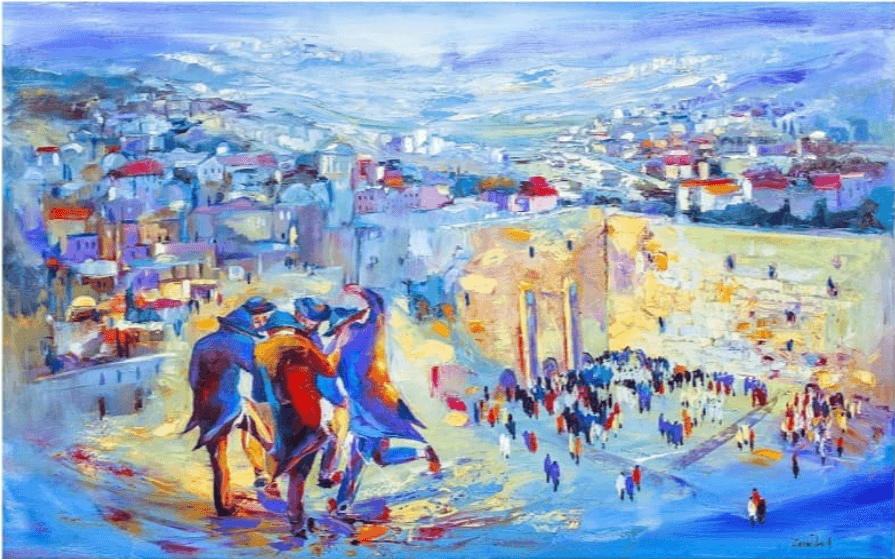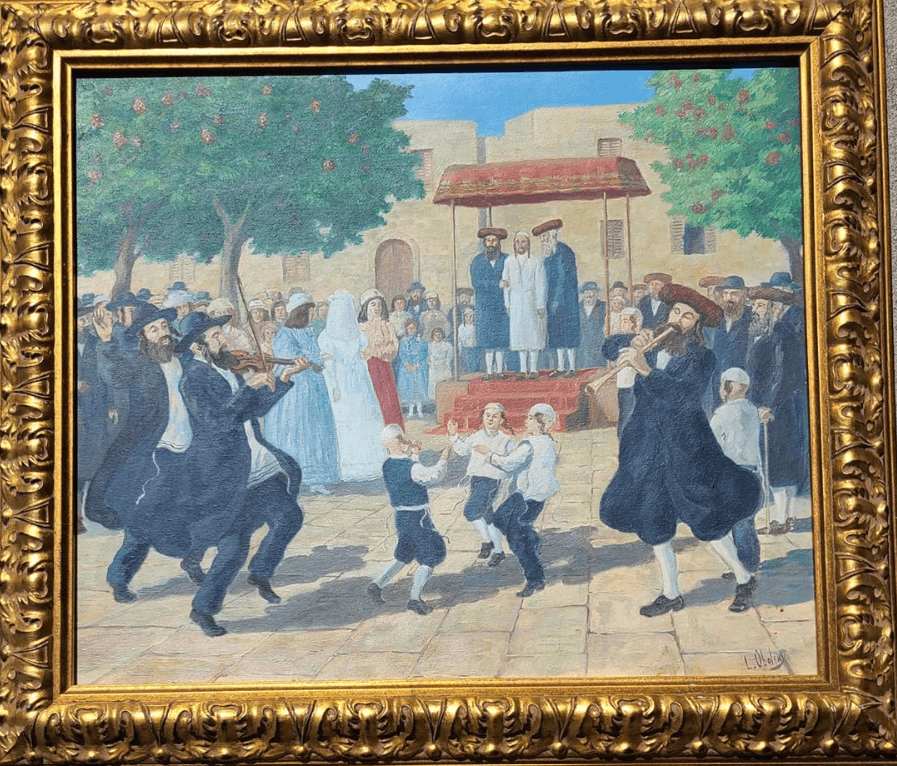This week, we celebrated Tu B’Av, a holiday of love and joy. While most might immediately think of romantic love, let’s talk about all the different types of love. Judaism teaches us that we must love each other, G-d, and the entire world and the best way to express that is through joy.
We show our love of each other- community- in how we come together for both celebrations and moments of sadness, how we treat each other (i.e. Lashon Hara), and how we help each other grow. Our love of G-d is present in our actions- we thank G-d daily in our prayers. And our love of the entire world is demonstrated in the emphasis placed on tzedakah– charity.
For today’s blog post, I’d like to look at a couple paintings that show love and joy beyond the traditional norms.
In this Anna Zarnitsky painting, a group of men dance in joy at the Kotel. There’s no clear indication of what had caused them to celebrate, it’s a clear contrast to the people praying at the Kotel behind them. Both groups of people are expressing love, one more outwardly than the other- but neither is invalidated. There’s also an interesting color dichotomy- both the Kotel and the dancers are created with yellow and gold tones, while the surrounding city is blue. Traditionally, blue is used when an artist is trying to show sadness and bright colors when illustrating joy.

Here, Leonid Obolsky has painted a typical wedding painting, but unlike many chuppah paintings where the bride is already under the chuppah, the viewer gets a clear look at the simultaneous celebrations. It’s possible that they musicians are simply providing live music for the ceremony, but maybe they just wanted to express their joy and love of community in that moment, inspiring the three young boys in the center to dance together.
